Top 5 Techniques for Eco-Friendly Weed Control
In today's world, where environmental concerns are at the forefront of gardening practices, finding sustainable methods for managing weeds is essential. This article explores five effective techniques for controlling weeds that not only promote a healthier ecosystem but also enhance the aesthetics of your garden. By implementing these eco-friendly strategies, you can minimize your environmental impact while improving soil health and fostering a thriving garden. Let’s dive into these practical tips that will help you keep your garden weed-free without resorting to harmful chemicals!
Mulching is a simple yet incredibly effective technique that suppresses weed growth while retaining soil moisture. By covering the soil with organic or inorganic materials, you create a barrier that blocks sunlight, preventing weed seeds from germinating. There are various types of mulch to choose from, including straw, wood chips, and even grass clippings. Each type offers unique benefits:
- Organic Mulch: Decomposes over time, enriching the soil.
- Inorganic Mulch: Lasts longer and requires less maintenance.
When applying mulch, aim for a thickness of about 2-3 inches, ensuring it covers the soil evenly. Remember to leave space around the base of plants to avoid moisture retention issues. With the right mulch, you’ll not only keep weeds at bay but also create a more attractive garden space.
Hand weeding remains one of the most environmentally friendly methods for controlling weeds. While it may seem labor-intensive, the benefits far outweigh the effort. By manually removing weeds, you eliminate them at the root, preventing them from returning. To make the process easier and more efficient, consider these best practices:
Understanding the best times to weed can significantly enhance your effectiveness. Weeding during the right season and time of day can make a world of difference:
Weeding in the morning or evening can affect the ease of removal and plant health. Morning weeding is often easier as the soil is moist, making it simpler to pull out weeds by their roots. Evening weeding, on the other hand, allows you to work in cooler temperatures but may lead to increased soil moisture that could hinder root removal. Weigh the pros and cons based on your schedule and local conditions.
Weather plays a crucial role in weed control. Factors like humidity and soil moisture influence the success of your hand weeding efforts. Weeding after a rain can be effective, as the soil is softer, but be cautious of muddy conditions that could make the task more challenging.
Using the right tools can make hand weeding more efficient. Consider investing in:
- Weeding Fork: Great for loosening soil around stubborn weeds.
- Hand Trowel: Perfect for digging out weeds with deep roots.
With the right tools in hand, you can make this eco-friendly method less daunting and more effective.
For those looking for a chemical-free alternative, organic herbicides offer a viable solution for weed management. These products, often derived from natural sources, can be effective while being safer for the environment. Popular organic herbicides include vinegar, salt, and corn gluten meal. Here are some tips for safe application:
- Always read the label and follow instructions carefully.
- Avoid spraying on windy days to prevent drift onto desirable plants.
Creating homemade herbicides can be an economical and eco-friendly solution. Simple recipes using common household ingredients, such as vinegar mixed with salt, can effectively tackle stubborn weeds without harming your garden.
If you prefer store-bought solutions, various commercial organic herbicides are available. Look for products with natural active ingredients that offer effective weed control without the harsh chemicals found in traditional herbicides.
Cover cropping is a proactive approach to weed control that enhances soil health. By planting specific crops during the off-season, you can prevent weed establishment while improving soil structure and fertility. Common cover crops include clover, rye, and vetch, each offering unique benefits:
- Improved Soil Structure: Enhances aeration and drainage.
- Nitrogen Fixation: Some cover crops, like clover, enrich the soil with nitrogen.
Selecting the appropriate cover crop is crucial for effective weed suppression. Consider factors such as climate, soil type, and your garden's specific needs to choose the best cover crop for your situation.
Proper planting and maintenance of cover crops are essential for maximizing their benefits. Ensure you plant at the right time and provide adequate care, such as watering and fertilizing, to promote optimal growth.
Crop rotation is a time-tested method that disrupts weed life cycles. By alternating the types of crops planted in a specific area, you can reduce weed populations and improve soil health. This technique not only helps in managing weeds but also decreases pest pressure and enhances biodiversity.
Understanding the advantages of crop rotation can enhance your weed management strategies. Rotating crops improves soil health, reduces the risk of disease, and decreases pest and weed pressure, leading to a more sustainable gardening practice.
Effective crop rotation requires careful planning. Create a rotation schedule that maximizes benefits while minimizing weed competition. Consider factors like crop families, nutrient needs, and the growth habits of different plants to develop a successful rotation plan.
Q: How can I prevent weeds from coming back?
A: Regular maintenance, such as mulching and hand weeding, combined with crop rotation, can significantly reduce weed recurrence.
Q: Are organic herbicides safe for pets?
A: Most organic herbicides are safer than chemical options, but always check the label and consult with your vet if you're unsure.
Q: How often should I weed my garden?
A: Regular inspections and weeding every few weeks during the growing season will keep your garden in check.
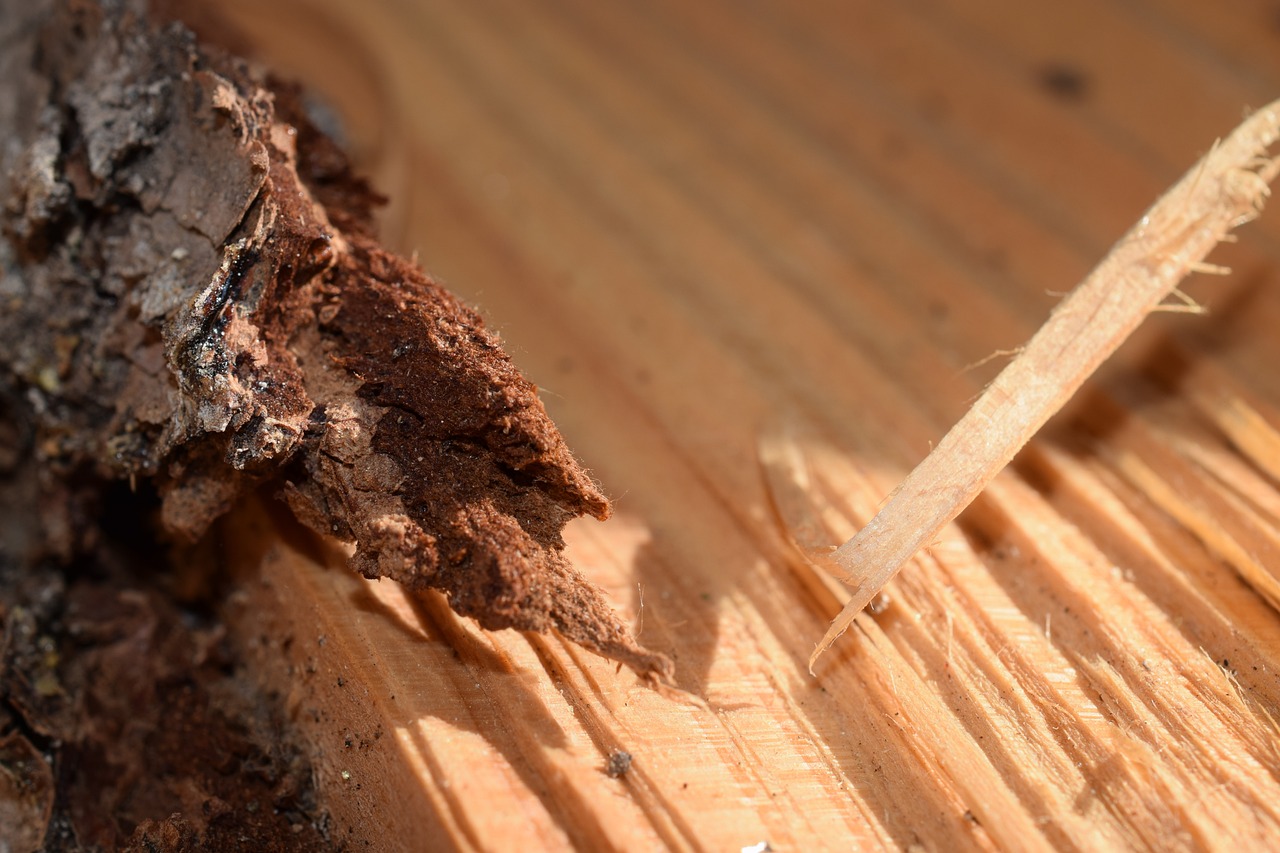
1. Mulching
Mulching is one of the most straightforward yet powerful techniques in the arsenal of eco-friendly weed control. By covering the soil with a layer of organic or inorganic material, you can effectively suppress weed growth while also retaining moisture in the soil. This dual benefit not only keeps your garden looking its best but also promotes a healthier ecosystem. Imagine your garden as a cozy blanket, where the mulch acts as a protective layer, shielding the soil from harsh elements while providing nutrients as it breaks down.
Different types of mulch serve various purposes, and selecting the right one can make a world of difference. Organic mulches, such as straw, wood chips, or grass clippings, enrich the soil as they decompose, providing a slow release of nutrients that plants crave. On the other hand, inorganic mulches, like landscape fabric or gravel, can be effective in preventing weed emergence without adding nutrients. Here’s a quick comparison:
| Type of Mulch | Benefits | Considerations |
|---|---|---|
| Organic | Enhances soil fertility, retains moisture | Needs replacement as it decomposes |
| Inorganic | Long-lasting, effective at weed suppression | Does not improve soil quality |
Applying mulch is relatively easy, but doing it correctly is key to maximizing its effectiveness. Start by preparing your garden bed—remove existing weeds and debris, and then lay down a thick layer of mulch, typically 2-4 inches. Be sure to keep the mulch a few inches away from plant stems to prevent rot and encourage healthy growth. Regularly check your mulch layer, as some materials may break down faster than others, requiring replenishment.
Moreover, mulching not only combats weeds but also helps regulate soil temperature, keeping it cooler in the summer and warmer in the winter. This temperature moderation can be crucial for plant health, as extreme temperatures can stress plants and inhibit growth. So, the next time you're in your garden, consider mulching as a simple yet effective way to create a thriving environment for your plants while keeping those pesky weeds at bay!

2. Hand Weeding
Hand weeding is one of those timeless gardening techniques that feels almost like a rite of passage for any dedicated gardener. It's not just about pulling out those pesky weeds; it's about engaging with your garden on a personal level. Imagine standing amidst your plants, feeling the earth beneath your fingers, and knowing that you're actively contributing to a healthier ecosystem. Not to mention, hand weeding is one of the most environmentally friendly methods for controlling weeds. By removing weeds manually, you avoid the use of harmful chemicals that can leach into the soil and waterways, thus protecting beneficial insects and the overall health of your garden.
When it comes to hand weeding, timing and technique are everything. You want to make sure you're pulling those weeds at just the right moment to maximize your efforts. For instance, weeding after a rain can be particularly effective since the soil is softer, making it easier to uproot the weeds along with their roots. However, if you wait too long, those weeds may go to seed, making your task exponentially harder. Plus, there’s something satisfying about seeing a garden free of weeds, isn’t there?
Understanding the best times to weed can significantly enhance your effectiveness. For example, weeding in the early morning or late evening can be beneficial, as the cooler temperatures reduce stress on your plants. Moreover, the soil tends to be moist during these times, allowing for easier removal of weeds. But, why is timing so crucial? Well, consider this: weeds are like uninvited guests at a party. If you catch them early, you can remove them before they start inviting their friends, which in this case are the seeds that could lead to a more significant weed problem later on.
Weeding in the morning has its perks. The soil is often damp from the night’s dew, making it easier to pull out weeds with their roots intact. Plus, you get a refreshing start to your day surrounded by nature. On the other hand, evening weeding allows you to avoid the heat of the day, making the task less taxing. However, there’s a downside: if you weed too late, you might miss some of the weeds that are more visible during daylight. So, what’s the best choice? It really depends on your schedule and personal preference!
Weather plays a crucial role in the success of hand weeding. For instance, if the soil is too dry, it becomes challenging to remove weeds without breaking their roots. Conversely, a rainy day can provide the perfect conditions for weeding, but be cautious! Too much rain can lead to muddy conditions, making it difficult to navigate your garden. Think of it like baking a cake; you need the right balance of ingredients to achieve the perfect result. So, check the weather before you head out with your weeding tools!
Using the right tools can make hand weeding a breeze. While your hands are the most essential tools, having a few extras can really enhance your efficiency and comfort. Some popular tools include:
- Weeding Fork: Great for loosening soil around deep-rooted weeds.
- Hand Trowel: Perfect for digging out stubborn weeds.
- Gloves: Protect your hands while giving you a better grip.
These tools can help you tackle different types of weeds, from the shallow-rooted ones that pop up easily to the more stubborn varieties that require a little extra effort. Remember, the right tools not only make the job easier but also more enjoyable!

2.1 Timing Your Weeding
Timing is everything, right? Well, when it comes to weeding, it’s no different! The effectiveness of your hand weeding efforts can greatly depend on when you choose to tackle those pesky invaders. Understanding the best times to weed not only enhances your results but also minimizes the stress on your garden plants. So, let’s dive into the seasonal considerations and optimal times that can make your weeding sessions more productive!
First off, consider the seasons. In spring, when the soil is moist and the weeds are just starting to sprout, it’s the perfect time to get ahead of them. Weeds are typically easier to pull out when the soil is damp, allowing their roots to come out with less resistance. On the other hand, late summer can be tricky. Weeds have usually established themselves by then, and the heat can make the soil hard and dry, making removal a bit of a workout.
Now, let’s explore the time of day. Many gardeners swear by weeding in the early morning or late evening. During these times, temperatures are cooler, and the soil retains moisture, which can make pulling weeds a breeze. Plus, your garden plants are often less stressed during these cooler periods, which means you’re less likely to disturb their roots while you’re at it. But what about weeding in the afternoon? While it might feel like a great way to spend a sunny day, the heat can make the soil dry and tough, leading to a frustrating weeding experience.
Additionally, weather conditions play a critical role in your weeding strategy. For instance, after a good rain, the soil is soft and pliable, making it easier to uproot those stubborn weeds. However, overly wet conditions can lead to muddy patches, making it difficult to navigate your garden. So, it’s all about finding that sweet spot! Here’s a quick reference table to help you visualize the best times for weeding:
| Time of Day | Pros | Cons |
|---|---|---|
| Morning | Cool temperatures, moist soil | May be dew on plants |
| Afternoon | Sunshine | Hot soil, dry conditions |
| Evening | Cool temperatures, less stress on plants | Limited daylight |
In conclusion, timing your weeding efforts can make a significant difference in your garden’s health and your overall gardening experience. By understanding the best seasons, times of day, and weather conditions for weeding, you’ll not only improve your efficiency but also foster a thriving garden ecosystem. So, grab your tools, pick the right time, and let’s get to work on those weeds!
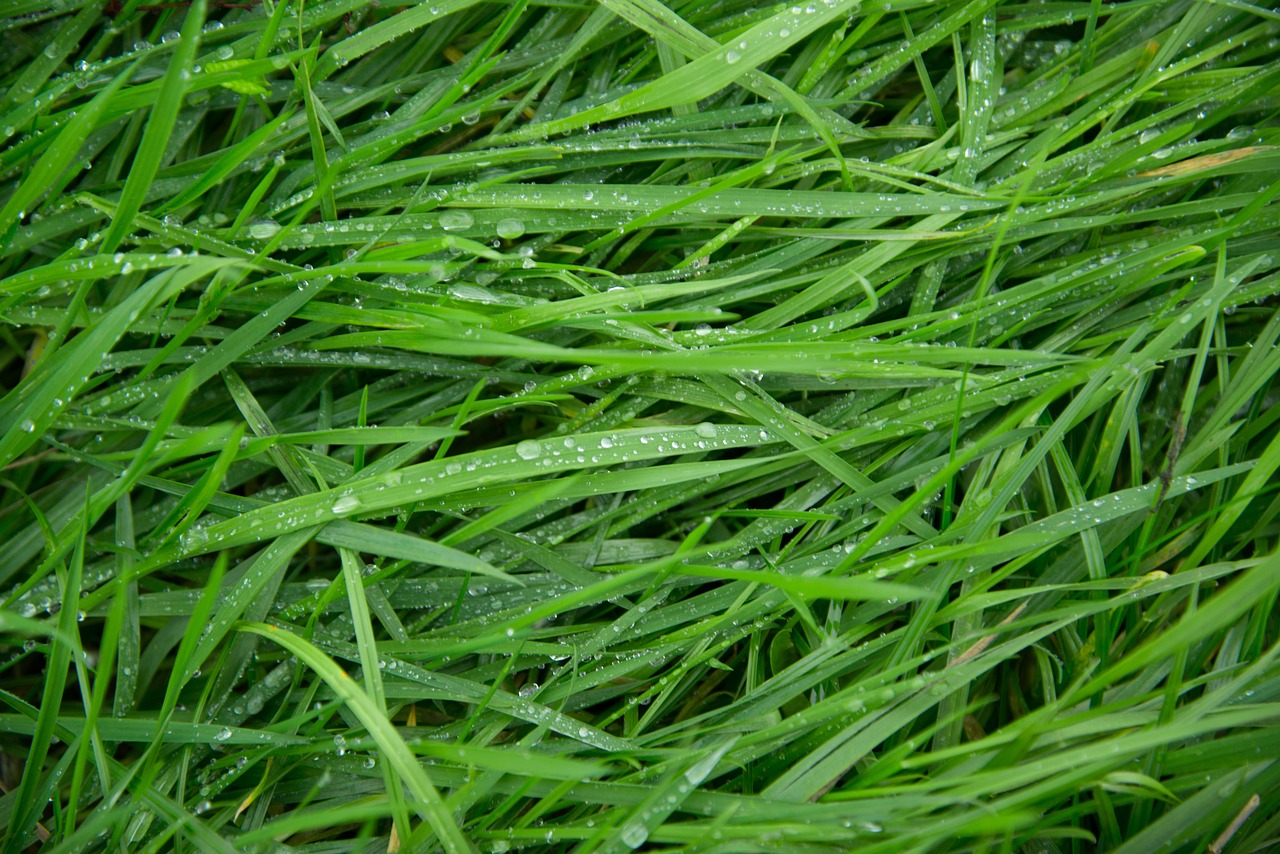
2.1.1 Morning vs. Evening Weeding
When it comes to weeding, timing can be everything. Imagine stepping into your garden at dawn, the cool morning air wrapping around you like a refreshing blanket. The ground is still damp from the night’s dew, making it easier to pull out those pesky weeds. Morning weeding offers several advantages, such as the soil being softer, which allows for easier root removal. Plus, the cooler temperatures can make the task feel less daunting, especially during the hotter months.
However, weeding in the morning isn’t without its challenges. The dew can make your hands slippery, and you might find yourself battling against the rising sun’s glare. But wait, let’s consider the evening! As the sun begins to set, the temperatures drop, providing a more comfortable atmosphere for weeding. The soil may still be moist from earlier watering or rainfall, making it easier to uproot those stubborn weeds.
On the flip side, evening weeding can come with its own set of challenges. As the light fades, it can be harder to see those weeds clearly, leading to potential oversights. Furthermore, weeding at night might attract nighttime critters, which could be a little unsettling for some gardeners. So, which is better? It really depends on your personal preference and schedule. Here are some factors to consider:
| Factor | Morning Weeding | Evening Weeding |
|---|---|---|
| Soil Condition | Moist and soft | Moist (if watered earlier) |
| Temperature | Cool and refreshing | Cooler as the sun sets |
| Visibility | Good visibility | Decreasing visibility |
| Comfort Level | Can be slippery | More comfortable |
Ultimately, the best time for you to weed might be a combination of both morning and evening sessions, depending on your garden’s needs and your schedule. The key is to find a rhythm that works for you, ensuring that those weeds don’t stand a chance!
- What is the best time of day to weed? The best time can vary, but many gardeners find morning to be ideal due to softer soil.
- Should I weed after it rains? Yes, weeding after rain can make the process easier since the soil will be softer.
- Do I need special tools for hand weeding? While you can use your hands, tools like hand trowels or weeding forks can make the job easier.

2.1.2 Weather Conditions
When it comes to hand weeding, understanding weather conditions can make all the difference in your success rate. Just like a chef needs the right ingredients to whip up a delicious meal, a gardener needs the right weather to effectively tackle those pesky weeds. The moisture level in the soil, humidity in the air, and even temperature can significantly influence how easy or difficult it is to pull weeds out by their roots.
For instance, weeding right after a rain shower can be a game-changer. The soil is softer, making it easier to uproot weeds without leaving any stubborn bits behind. On the flip side, if you’re trying to weed in dry, hard soil, you might find yourself pulling more on the plant than on the root, which is not what we want at all!
Here are some key weather factors to consider:
- Soil Moisture: Wet soil allows for easier removal of weeds. However, too much moisture can lead to muddy conditions, making it difficult to get a good grip on the weeds.
- Humidity: High humidity can promote weed growth, but it also softens the soil, which can be beneficial for weeding. Finding the balance is crucial.
- Temperature: Cooler temperatures are often ideal for weeding, as plants are less stressed and more likely to respond well to removal.
Additionally, the time of day plays a role too. Morning weeding can be advantageous because the soil is typically cooler and retains moisture from the night, while evening weeding can be effective as the sun sets, reducing stress on the plants. However, be cautious of extreme weather conditions, such as high winds or intense heat, which can make the task not only difficult but also uncomfortable.
In summary, always check the weather forecast before you head out to weed. A little planning can save you a lot of effort and increase your chances of pulling out those weeds effectively. Remember, the right weather can turn a daunting task into a breeze!
Q: What is the best time to weed?
A: The best time to weed is typically early in the morning or late in the evening when temperatures are cooler and soil moisture is higher.
Q: Does rain help with weeding?
A: Yes, weeding after a rain shower is ideal as the soil is softer, making it easier to pull out weeds without damaging the roots.
Q: Can I weed in hot weather?
A: It's best to avoid weeding during extremely hot weather as it can stress both you and the plants. If you must weed, do so in the early morning or late evening.

2.2 Tools for Hand Weeding
When it comes to hand weeding, having the right tools can make all the difference between a tedious chore and a satisfying gardening experience. Think of your garden as a canvas, and the right tools as your paintbrushes. Each tool serves a unique purpose, enhancing your ability to remove those pesky weeds without damaging your precious plants. Let's dive into some essential tools that can help you tackle weeds effectively.
First on the list is the classic hand trowel. This versatile tool is perfect for digging out weeds, especially those with deep roots. Its pointed blade allows you to penetrate the soil easily, making it easier to uproot stubborn weeds. When using a hand trowel, make sure to angle it appropriately to get under the weed's root system.
Next up is the weeding fork, which resembles a small pitchfork. This tool is fantastic for loosening the soil around weeds, making it easier to pull them out. It's particularly useful for larger weeds with extensive root systems. Just like a chef uses a fork to tenderize meat, you can use a weeding fork to break up the soil around your weeds, ensuring you can lift them out cleanly.
Another handy tool is the hoe. While many people think of hoes as tools for tilling, they can also be effective for weeding. A hoe allows you to slice through weeds at the soil level, effectively severing their roots. This method is especially useful for larger areas where weeds are abundant. However, be cautious; you want to avoid damaging the roots of nearby plants.
For those persistent weeds that seem to spring up overnight, consider investing in a hand weed puller. This tool often features a long handle with a forked end designed specifically for removing weeds by the roots. It's like having a mini excavator at your disposal! Just insert the fork around the weed's base, pull back on the handle, and watch as the weed comes out with its roots intact.
Lastly, don’t forget about gloves! While they may not seem like a 'tool' in the traditional sense, a good pair of gardening gloves can protect your hands from thorns, dirt, and blisters, allowing you to weed comfortably. Think of them as your armor in the battle against weeds.
In summary, the right tools can make hand weeding not only more efficient but also more enjoyable. Here’s a quick recap of essential tools:
- Hand Trowel: Great for digging out deep-rooted weeds.
- Weeding Fork: Perfect for loosening soil and uprooting larger weeds.
- Hoe: Effective for slicing through weeds at the soil level.
- Hand Weed Puller: Designed specifically for removing weeds by the roots.
- Gardening Gloves: Protect your hands while working in the garden.
With these tools in hand, you’ll be well-equipped to keep your garden weed-free and thriving. Remember, the key to successful hand weeding lies not just in the tools you use but also in your technique and timing!
Q1: How often should I weed my garden?
A1: It's best to check your garden weekly during the growing season. Weeds can quickly take over if left unchecked!
Q2: Can I use any of these tools in rocky soil?
A2: Yes, but you may need more robust tools like a sturdy hoe or a specialized weeding fork designed for tougher conditions.
Q3: Is there a specific time of day that’s best for weeding?
A3: Early morning or late afternoon is ideal, as the soil is often moist, making it easier to pull out weeds.

3. Organic Herbicides
When it comes to maintaining a beautiful garden, the idea of using chemical herbicides can be daunting for many eco-conscious gardeners. Fortunately, there’s a world of organic herbicides out there that provide a safe and effective alternative for weed management. These natural solutions not only help keep your garden free from unwanted plants but also support a healthier ecosystem by minimizing chemical runoff and protecting beneficial organisms.
Organic herbicides are derived from natural sources, making them less harmful to the environment compared to their synthetic counterparts. They can be particularly effective against common weeds like dandelions, crabgrass, and clover. However, it's essential to understand that while organic herbicides can be potent, they often require a bit more application finesse and timing to achieve the best results.
Some popular organic herbicides include:
- Vinegar: A household staple, vinegar contains acetic acid, which can effectively kill weeds on contact. For best results, use vinegar with a higher concentration of acetic acid, typically around 20%.
- Salt: Salt can be an effective weed killer when used carefully. It works by dehydrating the plant. However, be cautious, as it can also harm the surrounding soil and plants.
- Boiling Water: Pouring boiling water directly onto weeds can effectively scorch them. This method is particularly useful for weeds in patios or driveways.
When applying any organic herbicide, timing is crucial. It’s best to apply these solutions on sunny days when the plants are actively growing. This ensures that the herbicide penetrates the plant tissues more effectively. Additionally, be mindful of the wind; applying herbicides on a windy day can lead to unintended damage to nearby plants.
For those who prefer a more hands-off approach, there are also numerous commercial organic herbicides available. These products often contain ingredients like corn gluten meal or clove oil, which can be effective against weeds while being safe for the environment. It’s important to read the labels and follow the instructions carefully to ensure safe and effective use.
Here's a quick comparison table of some common organic herbicides:
| Herbicide | Active Ingredient | Effectiveness | Application Tips |
|---|---|---|---|
| Vinegar | Acetic Acid | Effective on contact | Apply on sunny days for best results |
| Salt | Sodium Chloride | Effective but can harm soil | Use sparingly; rinse area afterwards |
| Boiling Water | Heat | Immediate effect | Best for hard surfaces |
| Clove Oil | Essential Oil | Effective against young weeds | Mix with water for spraying |
In conclusion, organic herbicides offer a viable path to controlling weeds without compromising the health of your garden or the environment. By understanding the options available and applying them thoughtfully, you can achieve a weed-free garden that thrives sustainably. Remember, the key is to be patient and persistent, as nature often requires a little time to respond to our efforts.
Q: Are organic herbicides safe for pets and children?
A: Yes, most organic herbicides are made from natural ingredients and are generally safer than chemical alternatives. However, it's always best to keep pets and children away from treated areas until the product has completely dried.
Q: How often should I apply organic herbicides?
A: The frequency of application depends on the type of weed and the specific herbicide used. Generally, you may need to reapply every few weeks or after heavy rain.
Q: Can I use organic herbicides on my vegetable garden?
A: Many organic herbicides are safe for use in vegetable gardens, but it's crucial to read the labels and ensure that the product is suitable for edible plants.
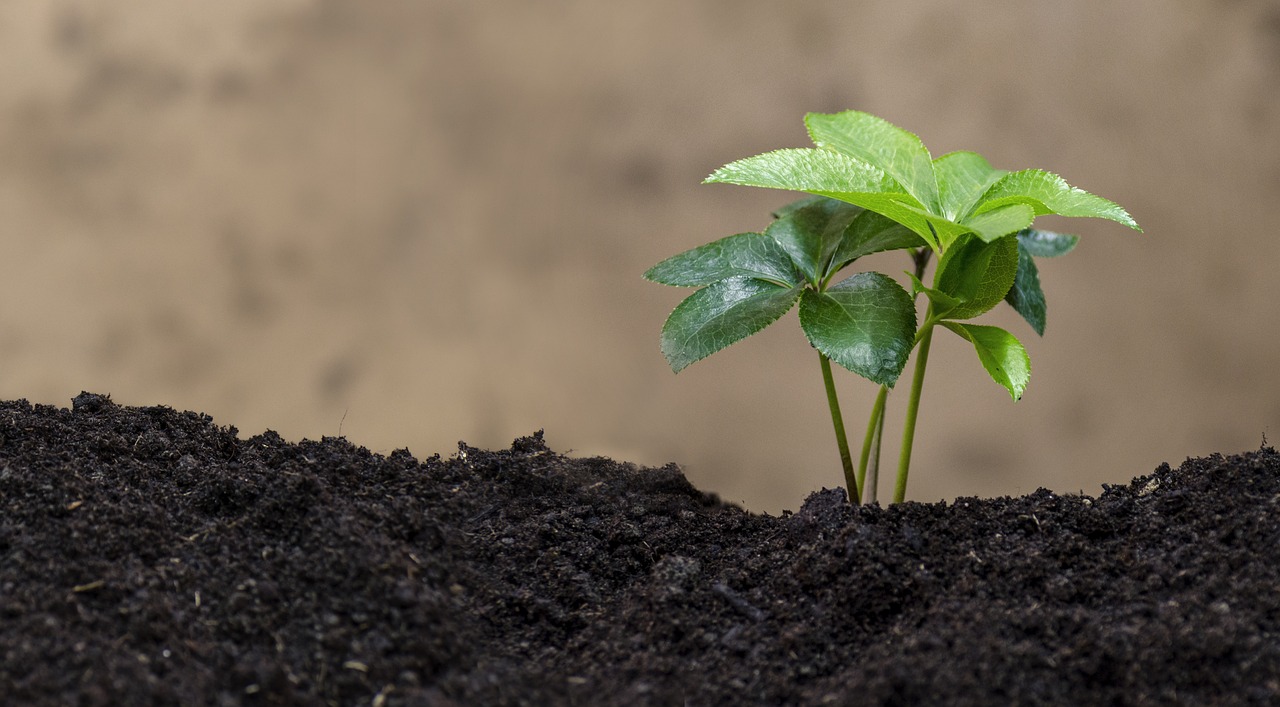
3.1 Homemade Herbicide Recipes
Creating your own homemade herbicides can be a fun and effective way to tackle those pesky weeds without resorting to harsh chemicals. Not only are these recipes typically more affordable, but they also allow you to control what goes into your garden, promoting a healthier ecosystem. Here are a few popular recipes that you can try at home:
One of the simplest and most effective homemade herbicides is a mixture of vinegar and salt. Vinegar contains acetic acid, which can desiccate the leaves of weeds, while salt helps to dehydrate them further. To make this solution, mix:
| Ingredient | Amount |
|---|---|
| Vinegar (5% acetic acid) | 1 gallon |
| Salt | 1 cup |
| Dish Soap | 1 tablespoon |
Mix these ingredients in a spray bottle and apply it directly onto the leaves of the weeds on a sunny day for the best results. The sunlight will help enhance the effectiveness of the vinegar. However, be cautious to avoid spraying desirable plants, as this solution is non-selective and can harm them too.
Another effective homemade herbicide is a boiling water solution. This method is particularly useful for weeds growing in cracks of driveways or patios. Simply bring a pot of water to a boil and carefully pour it directly over the weeds. The heat will kill the weeds instantly, making it a quick and eco-friendly solution.
If you're looking for something a bit more potent, try a citrus oil herbicide. Citrus oil contains d-limonene, which is a natural herbicide. To create this solution, you can mix:
| Ingredient | Amount |
|---|---|
| Citrus Oil | 2 tablespoons |
| Water | 1 quart |
| Dish Soap | 1 teaspoon |
Combine these ingredients in a spray bottle and apply it to the weeds, ensuring that you coat the leaves thoroughly. This method is particularly effective against tough perennial weeds.
It's important to note that while homemade herbicides can be effective, they may require multiple applications for stubborn weeds. Always test a small area first to ensure that your solution does not harm nearby plants. By using these homemade recipes, you can maintain a beautiful garden while keeping your environmental footprint low.
Q: Are homemade herbicides safe for pets and children?
A: Yes, most homemade herbicides use common household ingredients that are generally safe. However, it’s always best to keep pets and children away from treated areas until the solution has dried.
Q: How often should I apply homemade herbicides?
A: The frequency of application depends on the type of weed and the effectiveness of the solution. Generally, you may need to reapply every few days until the weeds are under control.
Q: Can homemade herbicides harm my garden plants?
A: Yes, homemade herbicides can be non-selective. Be cautious to apply them only on the weeds and avoid spraying desirable plants.

3.2 Commercial Organic Options
For those who prefer a more hands-off approach to weed management, commercial organic herbicides offer a viable solution. These products are designed to be effective against weeds while being safe for the environment, making them an excellent choice for eco-conscious gardeners. Unlike traditional chemical herbicides, which can leach into the soil and harm beneficial organisms, organic options typically utilize natural ingredients that break down more easily in the environment.
When considering commercial organic herbicides, it's essential to look at the active ingredients. Many of these products contain natural compounds such as vinegar, citric acid, or essential oils, which can effectively kill weeds upon contact. However, their effectiveness can vary based on factors like the type of weed, the concentration of the active ingredient, and the environmental conditions at the time of application. For example, products with higher vinegar concentrations can be particularly effective against annual weeds, while perennial weeds may require multiple applications for complete control.
Here’s a quick comparison of some popular commercial organic herbicides:
| Product Name | Active Ingredient | Effectiveness | Application Tips |
|---|---|---|---|
| EcoSMART Organic Weed & Grass Killer | Natural Plant Oils | Fast acting on contact | Apply on sunny days for best results |
| Avenger Organic Weed Killer | Natural Citrus Oil | Effective on most weeds | Reapply after rain or heavy watering |
| BurnOut Weed and Grass Killer | Vinegar and Clove Oil | Works quickly on young weeds | Best used in dry conditions |
While these organic herbicides can be effective, it’s crucial to apply them with care. You want to target the weeds without harming your desired plants. Always read the label and follow the instructions carefully. Additionally, timing your application can significantly influence the outcome. For instance, applying these products during the heat of the day when weeds are actively growing can enhance their effectiveness.
In summary, commercial organic herbicides provide a convenient and eco-friendly option for managing weeds in your garden. By choosing the right product and applying it thoughtfully, you can maintain a beautiful garden while protecting the environment. Remember, the goal is not just to eliminate weeds but to foster a healthy ecosystem that supports your plants and the surrounding wildlife.
Here are some common questions related to organic weed control:
- Are organic herbicides safe for pets and children? Yes, most commercial organic herbicides are formulated to be safe for pets and children when used as directed. However, it's always wise to keep them away from treated areas until dry.
- How long does it take for organic herbicides to work? The effectiveness can vary, but many organic herbicides show results within a few hours to a couple of days after application.
- Can I use organic herbicides on my vegetable garden? Yes, many organic herbicides are safe for use in vegetable gardens. Just be sure to check the label for any specific restrictions.
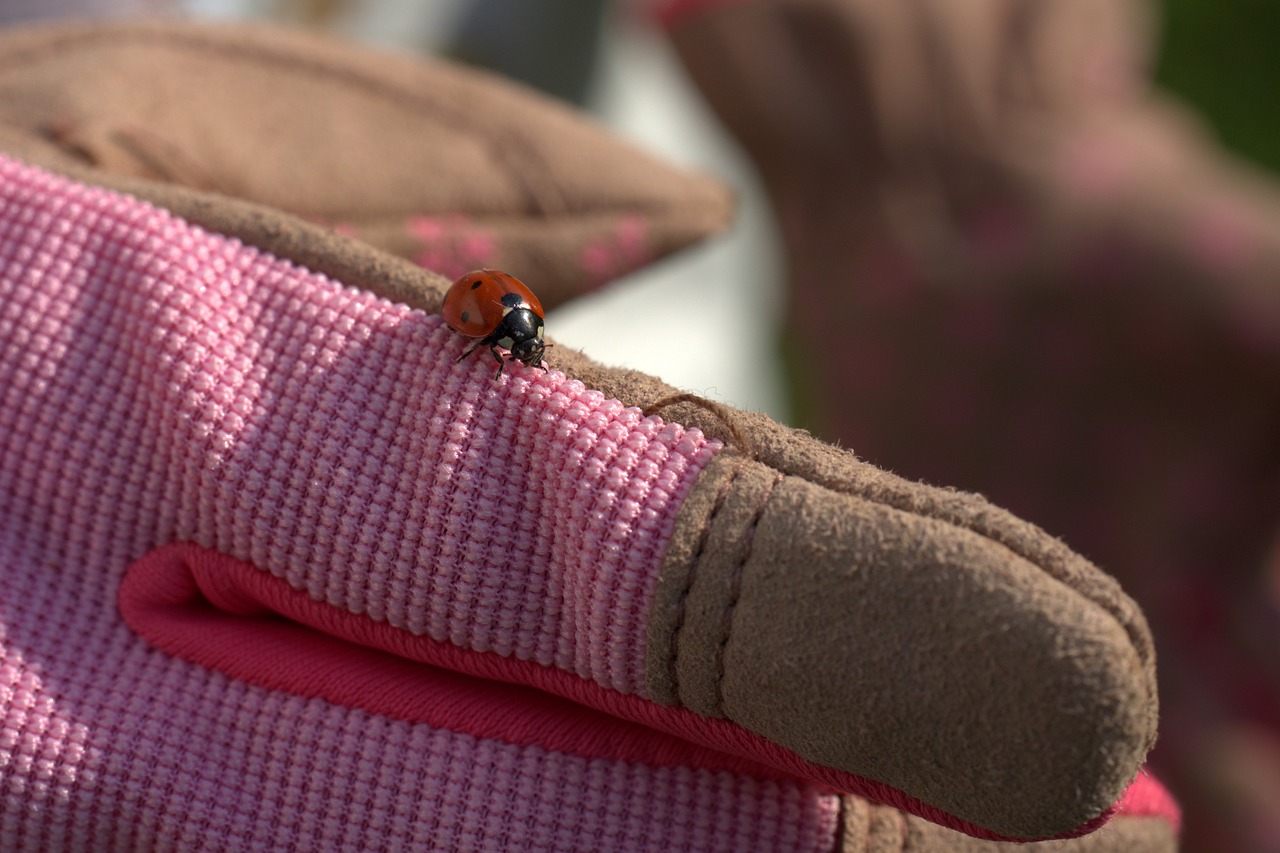
4. Cover Cropping
Cover cropping is not just a trendy buzzword in the gardening community; it's a proactive approach to managing weeds while simultaneously enhancing soil health. Imagine your garden as a bustling city, where cover crops act like the friendly inhabitants that keep the streets clean and vibrant. These crops, sown primarily for the benefit of the soil rather than for harvest, play a vital role in suppressing weeds, improving soil structure, and preventing erosion.
One of the most significant benefits of cover cropping is its ability to prevent weed establishment. By planting cover crops, you create a living blanket that shades the soil, making it difficult for weeds to get the sunlight they need to thrive. This natural barrier not only reduces the need for chemical herbicides but also fosters a healthier ecosystem. For instance, legumes like clover and vetch can fix nitrogen in the soil, enriching it for future crops while simultaneously choking out unwanted weeds.
When selecting cover crops, you should consider several factors, including your climate, soil type, and the specific weeds you are trying to manage. For example, if you live in a region with a harsh winter, you might opt for winter rye, which can survive frost and continue to grow in the spring. In contrast, if you're in a milder climate, you can experiment with a mix of different cover crops to maximize benefits. Here’s a quick overview of some popular cover crops:
| Cover Crop | Benefits | Best For |
|---|---|---|
| Hairy Vetch | Fixes nitrogen, suppresses weeds | Cool-season crops |
| Winter Rye | Suppresses weeds, prevents erosion | Cold climates |
| Crimson Clover | Improves soil fertility, attracts pollinators | Spring planting |
Once you've chosen your cover crops, the next step is proper planting and maintenance. Timing is crucial; you want to plant your cover crops at the right moment to ensure they establish before the main growing season. Typically, this means sowing them in late summer or early fall. After planting, regular maintenance is essential. This includes monitoring their growth and ensuring they don’t become too competitive with your main crops. You can achieve this by mowing or terminating the cover crops before they flower, which will help to manage their biomass effectively.
In summary, cover cropping is an invaluable technique for anyone looking to manage weeds sustainably. Not only does it provide a natural method for weed suppression, but it also enhances soil health, making it a win-win for both your garden and the environment. So, why not give it a try? Your plants will thank you!
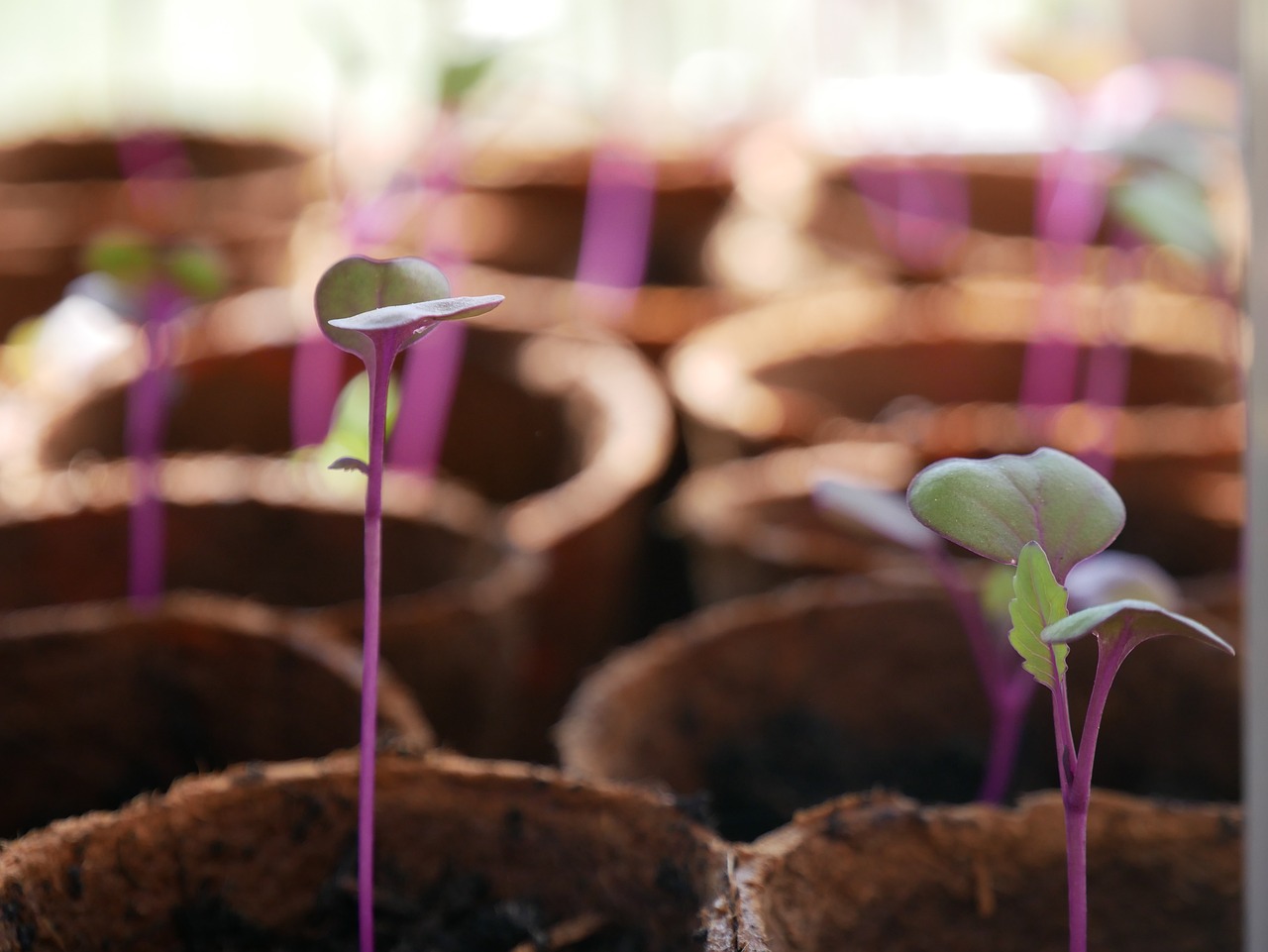
4.1 Choosing the Right Cover Crop
Choosing the right cover crop is crucial for effective weed suppression and enhancing soil health. It's not just about picking any plant; it's about understanding the specific needs of your garden or farm. Different cover crops serve various purposes, such as improving soil structure, fixing nitrogen, or suppressing weeds. To make an informed decision, consider the following factors:
- Climate: Your local climate significantly impacts which cover crops will thrive. For instance, legumes like clover are great for cooler climates, while warm-season grasses like millet flourish in hotter areas.
- Soil Type: Different soils have varying nutrient profiles and drainage capabilities. A sandy soil may benefit from deep-rooted cover crops, while clay soils might require crops that improve aeration.
- Weed Pressure: Assess the types of weeds you're dealing with. Some cover crops can outcompete specific weeds, making them more effective in certain situations.
- Crop Rotation: Consider your crop rotation plan. Some cover crops can enhance the growth of subsequent crops, so think about how they fit into your overall planting schedule.
For example, if you’re battling persistent weeds like crabgrass, a fast-growing cover crop like buckwheat can quickly establish itself, shading the ground and preventing weed seeds from germinating. On the other hand, if your goal is to enrich the soil with nitrogen, legumes such as vetch or peas are ideal choices. They not only suppress weeds but also add valuable nutrients back into the soil as they decompose.
Additionally, it's essential to consider the growth cycle of your cover crop. Some crops, like rye, can be planted in the fall and will survive the winter, providing soil coverage during the cold months. Others, like sorghum-sudangrass, are best suited for summer planting. By aligning your cover crop selection with your planting schedule, you can maximize the benefits while minimizing competition with your main crops.
In conclusion, choosing the right cover crop is a blend of art and science. It requires a keen understanding of your garden's unique conditions and the specific benefits you wish to achieve. By carefully selecting the appropriate cover crops, you can create a thriving ecosystem that not only suppresses weeds but also enhances the overall health of your soil.
Q: How do cover crops help in weed control?
A: Cover crops outcompete weeds for resources such as light, water, and nutrients, effectively suppressing their growth.
Q: Can I use cover crops in small gardens?
A: Absolutely! Even small gardens can benefit from cover crops. Just choose varieties that suit your space and growing season.
Q: When should I plant cover crops?
A: The timing depends on the type of cover crop. Some are best planted in the fall, while others thrive in the spring or summer.
Q: Do cover crops require special care?
A: While cover crops are generally low-maintenance, they do need monitoring to ensure they establish well and do not become invasive.
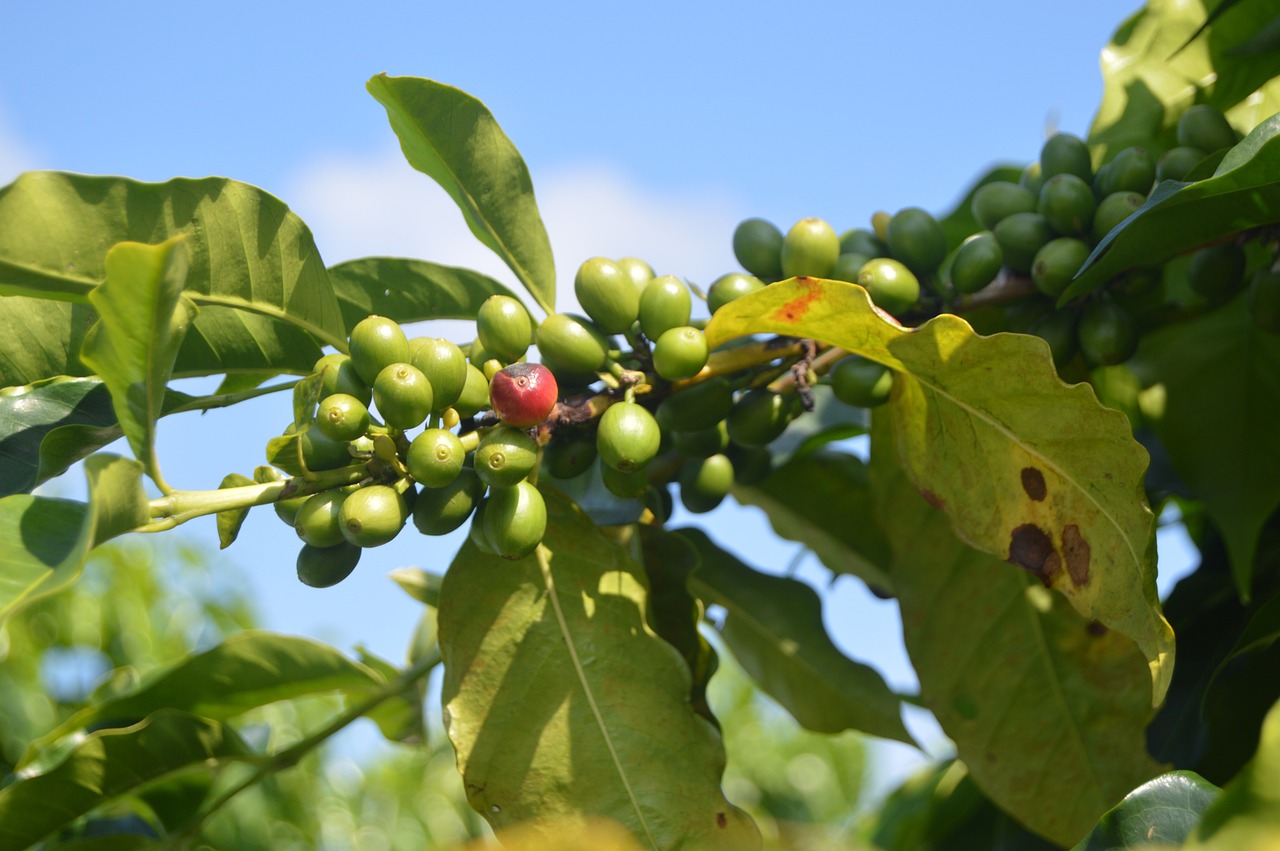
4.2 Planting and Maintenance
When it comes to maximizing the benefits of cover crops, proper planting and maintenance are absolutely essential. Imagine planting a tiny seed that will grow into a lush green carpet, protecting your soil like a superhero! But how do you ensure that this superhero thrives? First, timing is crucial. Plant your cover crops at the right moment, typically in the fall after your main crops have been harvested. This allows them to establish strong roots before the winter sets in, ensuring they can effectively suppress weeds come spring.
Next, consider the type of cover crop you’re planting. Different crops serve different purposes. For instance, legumes like clover not only cover the ground but also enrich the soil with nitrogen. On the other hand, grasses such as rye can create a dense mat that prevents weed growth. It’s like picking the right tool for the job; you want to choose the one that will give you the best results based on your specific garden needs.
Once you’ve planted your cover crops, maintenance becomes key. Regularly monitor their growth and health. This can involve:
- Watering as needed, especially during dry spells.
- Checking for pests or diseases that could hinder their development.
- Managing the height of the crops; if they get too tall, they might compete with your main plants when the time comes to transition.
In addition, it’s important to know when to terminate your cover crops. This can usually be done by tilling them into the soil before planting your next round of crops. This not only adds organic matter but also helps in weed suppression by disrupting their growth cycle. Think of it like giving your soil a nutritious meal!
To sum it up, planting and maintaining cover crops is all about timing, choosing the right type, and keeping a close eye on their health. By doing so, you’re not just controlling weeds; you’re nurturing a vibrant ecosystem that will pay dividends in the form of healthier soil and more robust plants in the long run.
Q1: What are cover crops?
A1: Cover crops are plants grown primarily to improve soil health, prevent erosion, and suppress weeds. They are typically planted during the off-season when main crops are not being cultivated.
Q2: How do cover crops help with weed control?
A2: Cover crops compete with weeds for sunlight, water, and nutrients, effectively reducing weed populations. Their dense growth also shades the soil, making it less hospitable for weed seeds to germinate.
Q3: When should I plant cover crops?
A3: The best time to plant cover crops is typically in the fall after harvesting your main crops. This allows them to establish before winter.
Q4: Can I use cover crops in my vegetable garden?
A4: Absolutely! Cover crops can enhance the health of your vegetable garden by improving soil structure and fertility, while also suppressing weeds.
Q5: How long should I leave cover crops in the ground?
A5: You can leave cover crops in the ground until just before planting your next crop. This allows them to provide maximum benefits to the soil.

5. Crop Rotation
Crop rotation is a time-tested method that not only enhances soil health but also plays a crucial role in disrupting the life cycles of weeds. By alternating the types of crops grown in a particular area from season to season, gardeners and farmers can effectively manage weed populations while improving overall soil fertility. Imagine your garden as a stage; each crop is a different actor that brings unique qualities to the performance, helping to keep the audience—your soil—engaged and healthy.
One of the primary benefits of crop rotation is its ability to break the cycle of weed growth. Many weeds thrive when the same plants are grown repeatedly in the same soil, as they adapt to those specific conditions. By rotating crops, you can confuse these weeds, making it harder for them to establish themselves. For instance, if you plant legumes one year and follow with a leafy green the next, the weeds that thrived in the legume's environment may struggle to adapt to the new conditions created by the leafy greens.
Moreover, crop rotation can significantly enhance the nutrient profile of the soil. Different crops have varying nutrient requirements and contribute differently to soil health. For example, legumes, such as beans and peas, fix nitrogen in the soil, enriching it for the subsequent crop. This not only reduces the need for chemical fertilizers but also promotes a more sustainable gardening practice. Below is a simple table illustrating how different crops can benefit soil health:
| Crop Type | Nutrient Contribution | Weed Suppression |
|---|---|---|
| Legumes | Fix nitrogen | Disrupts weed cycles |
| Root Vegetables | Improve soil structure | Shade out weeds |
| Leafy Greens | Utilize available nutrients | Cover soil |
When planning your crop rotation, consider factors such as climate, soil type, and the specific weed challenges you face. For instance, if you live in a region prone to certain weeds, you might choose crops that are known to outcompete those weeds. Additionally, the timing of planting and harvesting can also impact the effectiveness of your rotation strategy. This is where a well-thought-out rotation schedule comes into play, allowing you to maximize the benefits of each crop while minimizing weed competition.
In conclusion, crop rotation is more than just a gardening technique; it's a holistic approach to maintaining a vibrant and healthy ecosystem in your garden. By understanding the principles of crop rotation and applying them thoughtfully, you can enjoy a thriving garden that not only looks good but also supports the environment. So, why not give it a try? Your soil—and your weeds—will thank you!
- What is crop rotation? Crop rotation is the practice of growing different types of crops in the same area across different seasons to improve soil health and control weeds.
- How does crop rotation help with weed control? By changing the types of crops grown, it disrupts the life cycles of weeds, making it more difficult for them to establish and thrive.
- Can I use any crops for rotation? While you can rotate many types of crops, it's best to choose those that have different nutrient needs and growth habits to maximize benefits.
- How often should I rotate my crops? Ideally, you should rotate your crops every season or at least once a year, depending on the growing conditions and types of crops.
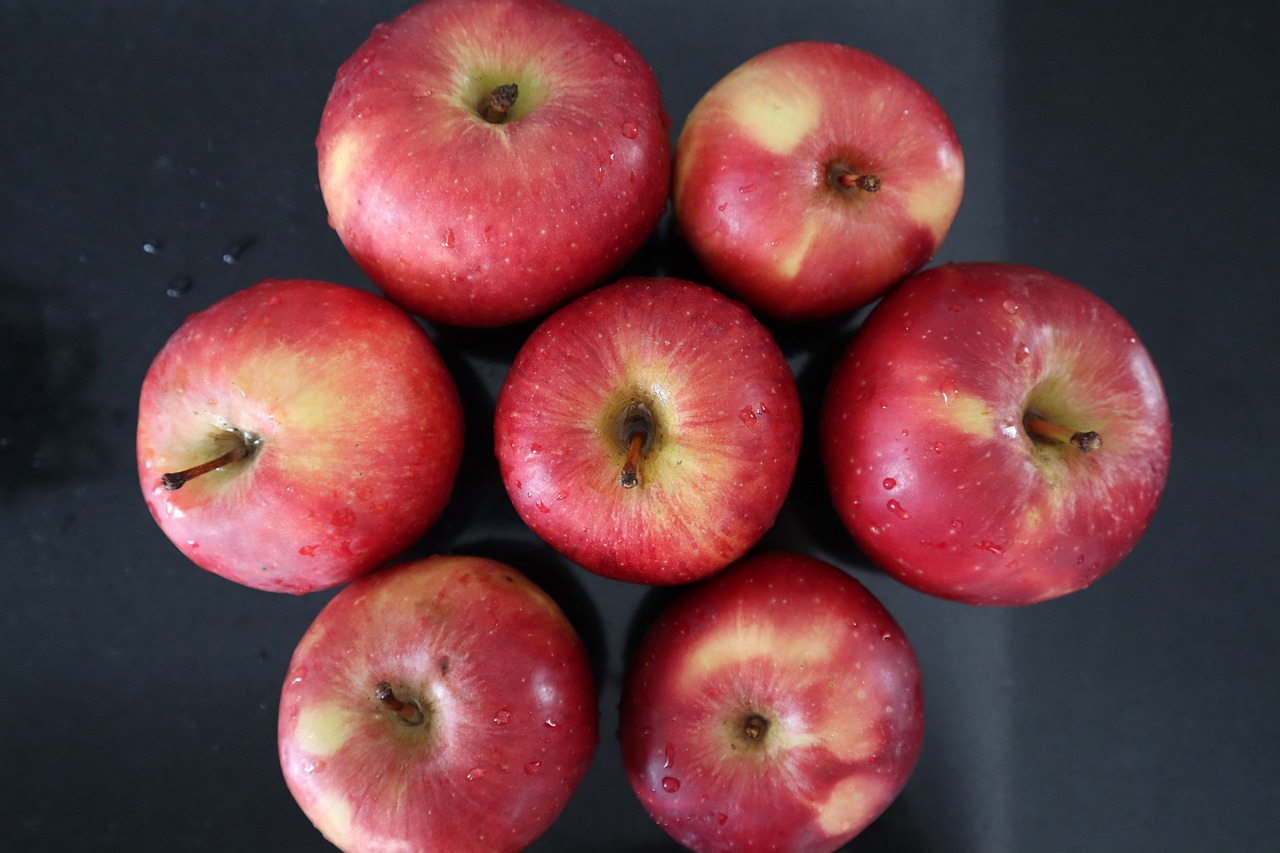
5.1 Benefits of Crop Rotation
Crop rotation is not just a farming technique; it’s a powerhouse strategy for enhancing soil health and managing weeds effectively. By alternating the types of crops grown in a particular area over time, gardeners and farmers can disrupt the life cycles of weeds, pests, and diseases that thrive on specific plants. This method is akin to giving your soil a refreshing change of scenery, which can lead to better nutrient availability and improved yields.
One of the primary benefits of crop rotation is its ability to reduce weed pressure. When you plant different crops, the weeds that may have adapted to a specific crop’s growing conditions are less likely to thrive. For instance, if you follow a cereal crop with a legume, the different root structures and nutrient requirements can create an environment that is less favorable for weeds. This natural competition can significantly lower the weed population over time.
Additionally, crop rotation enhances soil fertility. Different crops have varying nutrient needs and contributions. Legumes, for example, can fix nitrogen in the soil, enriching it for subsequent crops. This nutrient cycling not only improves soil health but also reduces the need for synthetic fertilizers, making your gardening practices more sustainable and eco-friendly.
Moreover, crop rotation can help in breaking pest cycles. Many pests are specific to certain crops, and by rotating them, you can confuse these pests and limit their populations. This is similar to changing your password regularly to keep intruders at bay. The less familiar the environment is to these pests, the less they can establish themselves, leading to healthier plants and reduced pesticide use.
Finally, implementing a crop rotation plan can also lead to increased biodiversity in your garden or farm. By growing a variety of crops, you create a more resilient ecosystem that can withstand diseases and pest invasions better than monocultures. This diversity not only benefits the crops but also attracts beneficial insects and wildlife, contributing to a balanced ecosystem.
In summary, the benefits of crop rotation are numerous and impactful. From reducing weed pressure and enhancing soil fertility to breaking pest cycles and increasing biodiversity, this method is a cornerstone of sustainable agriculture. By planning your crop rotation strategically, you can cultivate a thriving garden that is both productive and environmentally friendly.
- What is crop rotation? Crop rotation is the practice of growing different crops in the same area across a sequence of seasons to improve soil health and manage pests and weeds.
- How does crop rotation help with weed control? By alternating crops, you disrupt the life cycles of weeds that are adapted to specific plants, reducing their populations over time.
- Can crop rotation improve soil fertility? Yes, different crops contribute varied nutrients to the soil. For instance, legumes can fix nitrogen, enhancing soil fertility for subsequent crops.
- Is crop rotation beneficial for pest management? Absolutely! Rotating crops can confuse pests and limit their populations, reducing the need for chemical pesticides.
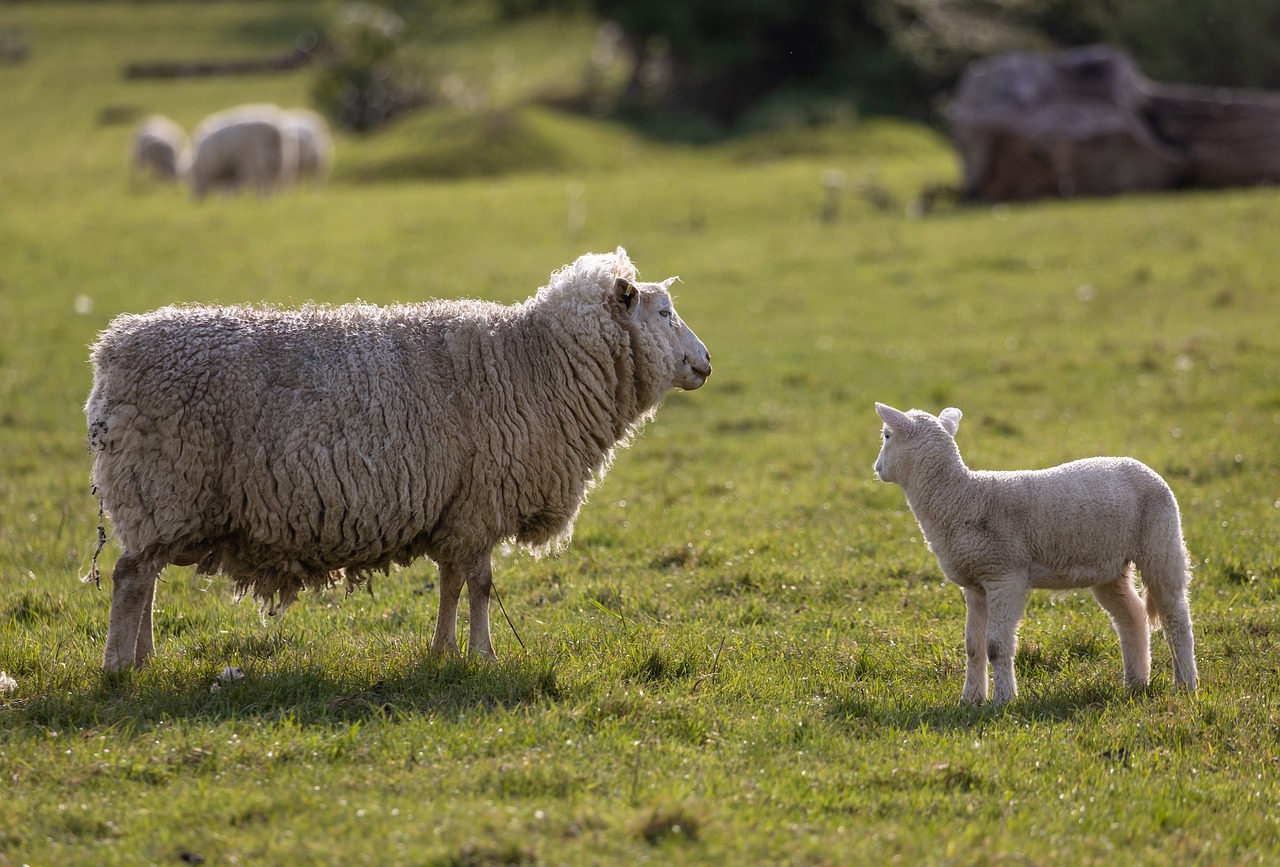
5.2 Planning Your Rotation
Planning your crop rotation is like composing a symphony; every instrument needs to play its part at the right time to create harmony in the garden. The first step in this process is to assess your garden’s unique conditions. Consider factors such as soil type, climate, and the specific crops you wish to grow. Each crop has its own nutrient requirements and pest vulnerabilities, so understanding these elements will help you create a balanced rotation plan.
Next, map out a rotation schedule that spans several growing seasons. A typical rotation might last 3 to 4 years, allowing you to cycle through different families of plants. For example, you might group your crops into categories such as:
- Legumes: Beans, peas, and lentils that enrich the soil with nitrogen.
- Leafy Greens: Spinach, lettuce, and kale that thrive in nutrient-rich environments.
- Root Vegetables: Carrots, potatoes, and beets that require different soil conditions.
- Fruit-bearing Plants: Tomatoes, peppers, and squash that need more nutrients and space.
By rotating these groups, you can effectively disrupt pest and weed cycles. For instance, planting legumes after heavy feeders like tomatoes can replenish nitrogen in the soil, making it beneficial for the next crop. Keep a detailed record of what you plant each season, noting any pest issues or soil health observations. This will help you refine your rotation plan over time.
Additionally, consider using a visual aid such as a calendar or a chart to keep track of your rotation schedule. Below is a simple example of what your rotation plan might look like:
| Year | Crop Group 1 | Crop Group 2 | Crop Group 3 | Crop Group 4 |
|---|---|---|---|---|
| Year 1 | Legumes | Leafy Greens | Root Vegetables | Fruit-bearing Plants |
| Year 2 | Leafy Greens | Root Vegetables | Fruit-bearing Plants | Legumes |
| Year 3 | Root Vegetables | Fruit-bearing Plants | Legumes | Leafy Greens |
| Year 4 | Fruit-bearing Plants | Legumes | Leafy Greens | Root Vegetables |
Incorporating these elements into your planning will not only help reduce weed competition but also enhance the overall health of your garden. Remember, the key to effective crop rotation lies in flexibility and observation. Don’t hesitate to adjust your plans based on the performance of your crops and the challenges you encounter.
Q: How often should I rotate my crops?
A: Ideally, you should rotate your crops every season or every year, depending on the type of crops you are growing. A 3-4 year rotation schedule is commonly recommended.
Q: Can I plant the same crops in the same spot every year?
A: It's not advisable, as this can lead to nutrient depletion and increased pest problems. Rotating crops helps maintain soil health and disrupts pest and weed cycles.
Q: What if I have limited space for crop rotation?
A: Even in small gardens, you can practice rotation by grouping plants with similar needs and rotating them within those groups. Container gardening can also help facilitate rotation.
Frequently Asked Questions
- What is mulching and how does it help with weed control?
Mulching involves covering the soil with organic or inorganic materials to suppress weed growth. It helps retain moisture, regulate soil temperature, and improve soil health by adding nutrients as it decomposes. By blocking sunlight, mulch prevents weed seeds from germinating, making it a highly effective strategy for maintaining a healthy garden.
- How often should I hand weed my garden?
Hand weeding should be done regularly, ideally every few weeks, especially during the growing season when weeds are most active. The key is to catch weeds early before they have a chance to establish deep roots. This proactive approach not only reduces the weed population but also minimizes competition for nutrients and water among your plants.
- What are some effective homemade herbicide recipes?
Homemade herbicides can be made using simple ingredients like vinegar, salt, and dish soap. A common recipe includes mixing one part vinegar with one part water and adding a tablespoon of dish soap. This mixture can effectively kill weeds on contact, making it an eco-friendly alternative to store-bought chemicals.
- How do cover crops contribute to weed control?
Cover crops are planted during the off-season to cover the soil and prevent weed growth. They compete with weeds for resources and can suppress their growth through shading and allelopathy, a natural chemical process. Additionally, cover crops improve soil structure and fertility, creating a healthier environment for your main crops.
- What is crop rotation and why is it important for weed management?
Crop rotation is the practice of growing different types of crops in the same area across seasons. This method disrupts the life cycles of weeds, pests, and diseases that thrive on specific crops. By varying the plants you grow, you can reduce weed pressure and enhance soil health, ultimately leading to a more productive garden.



















